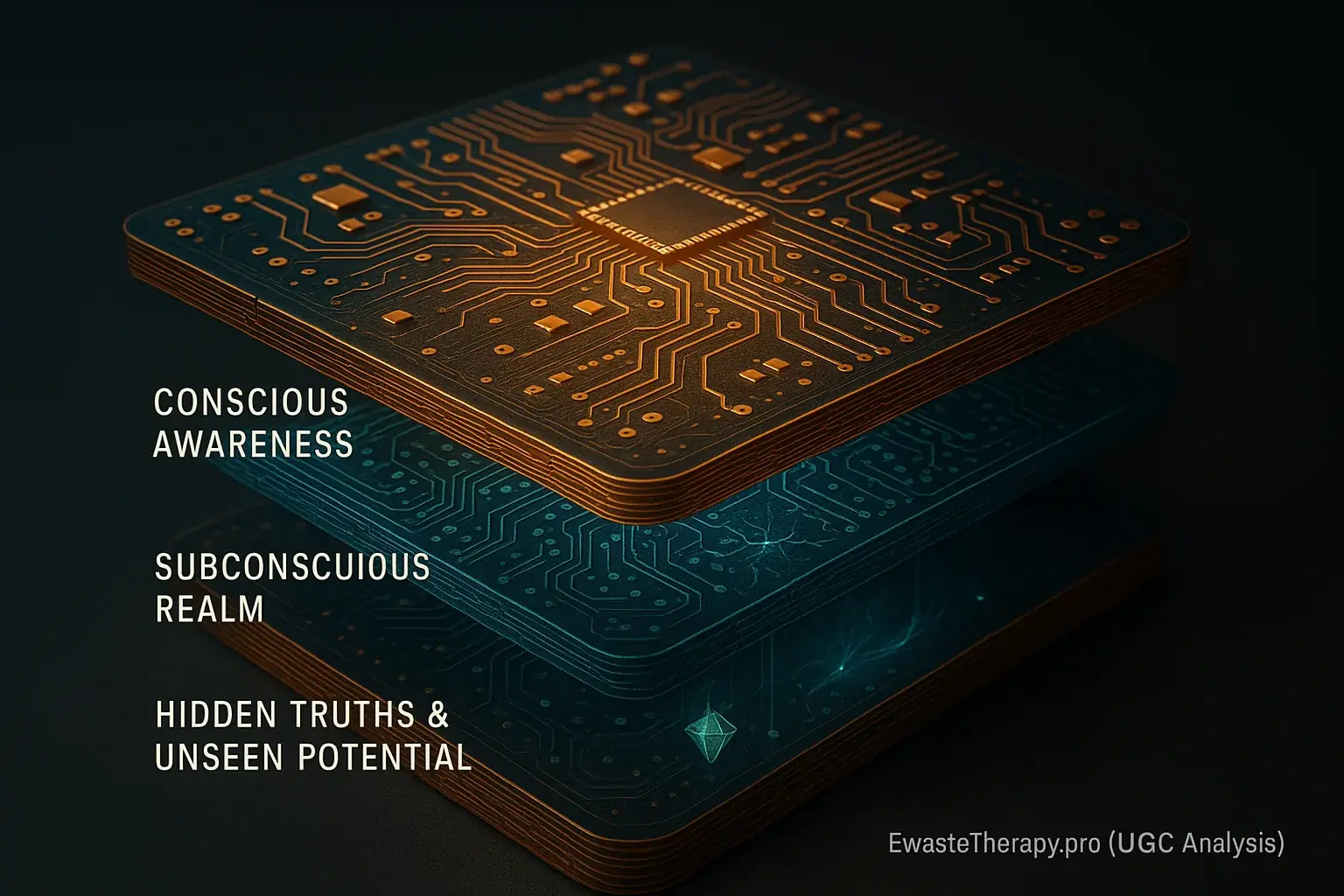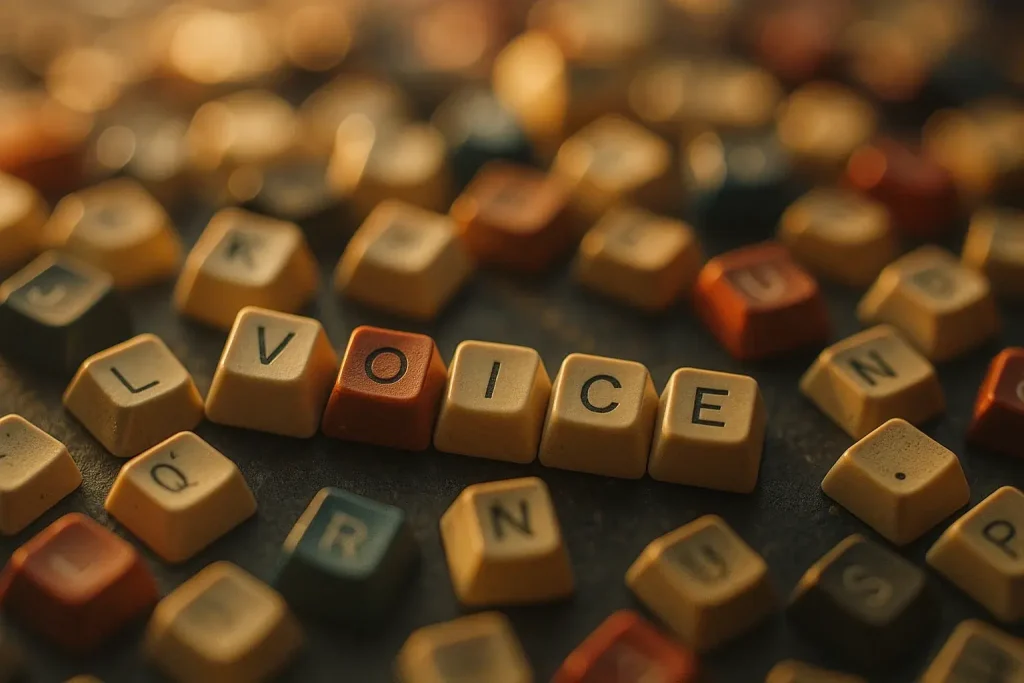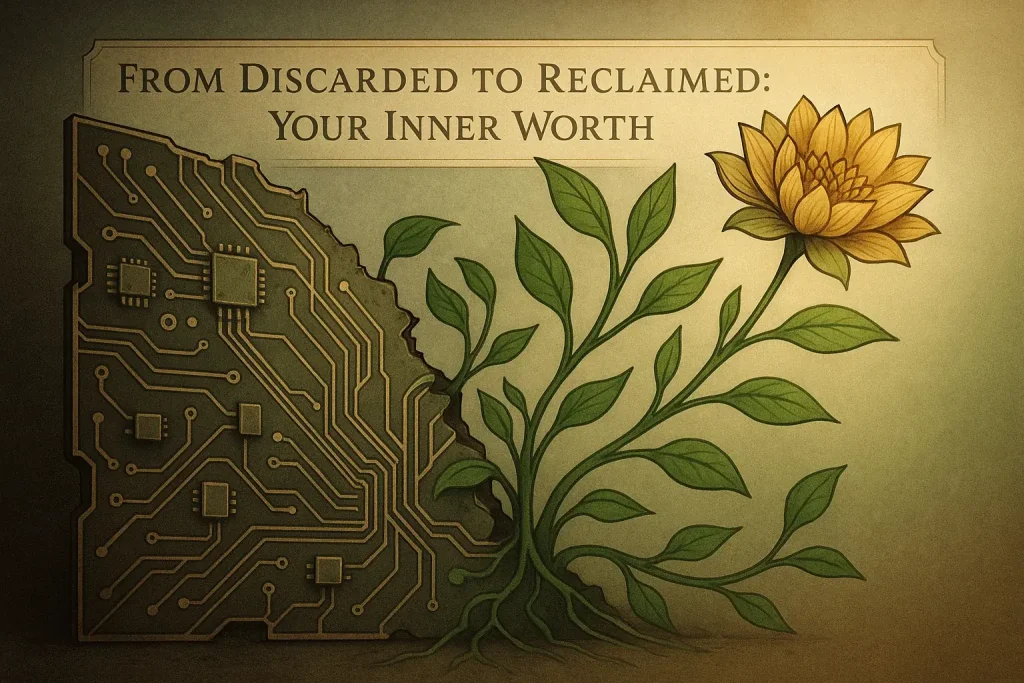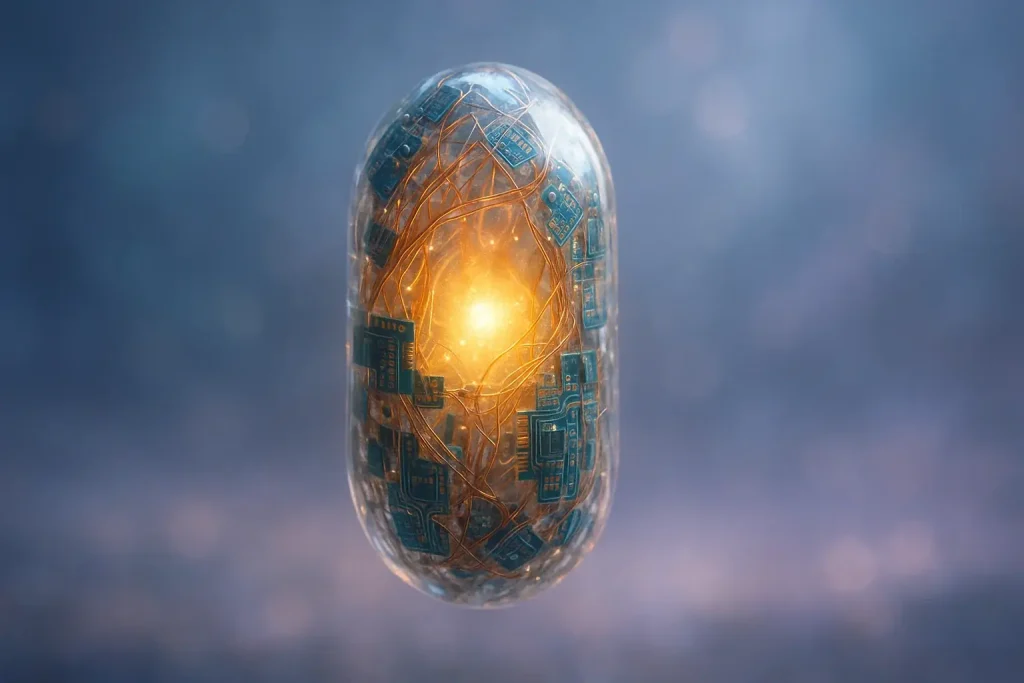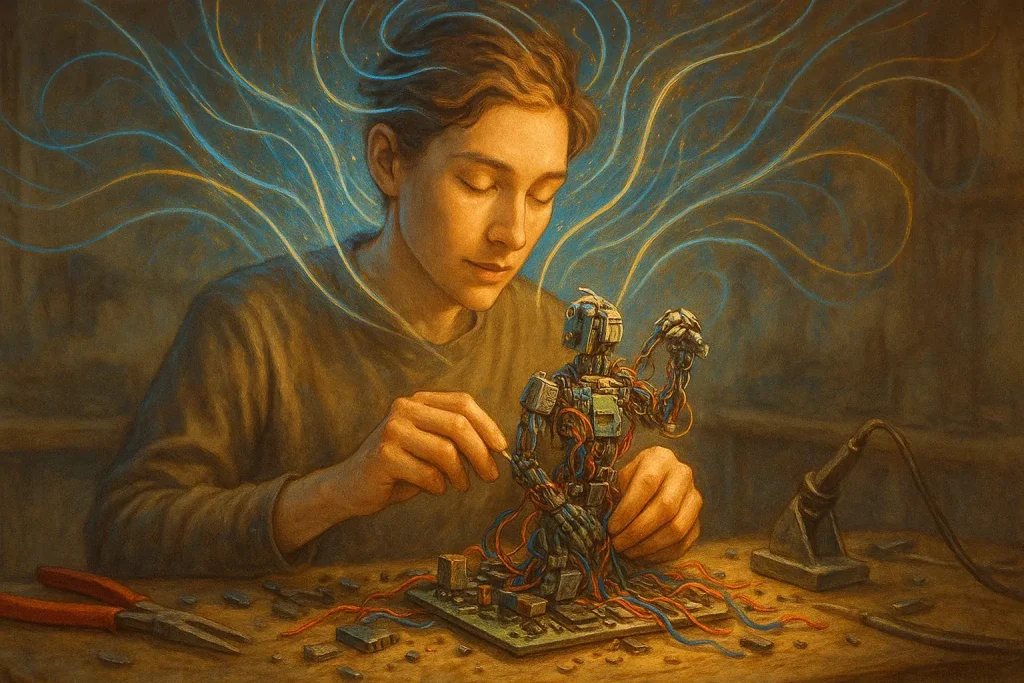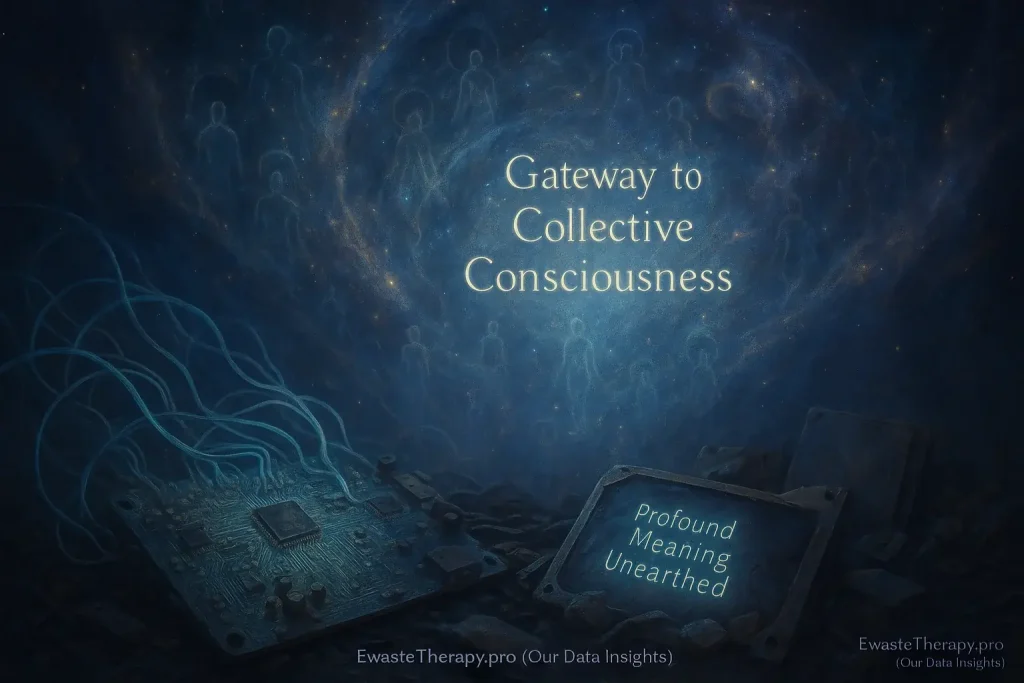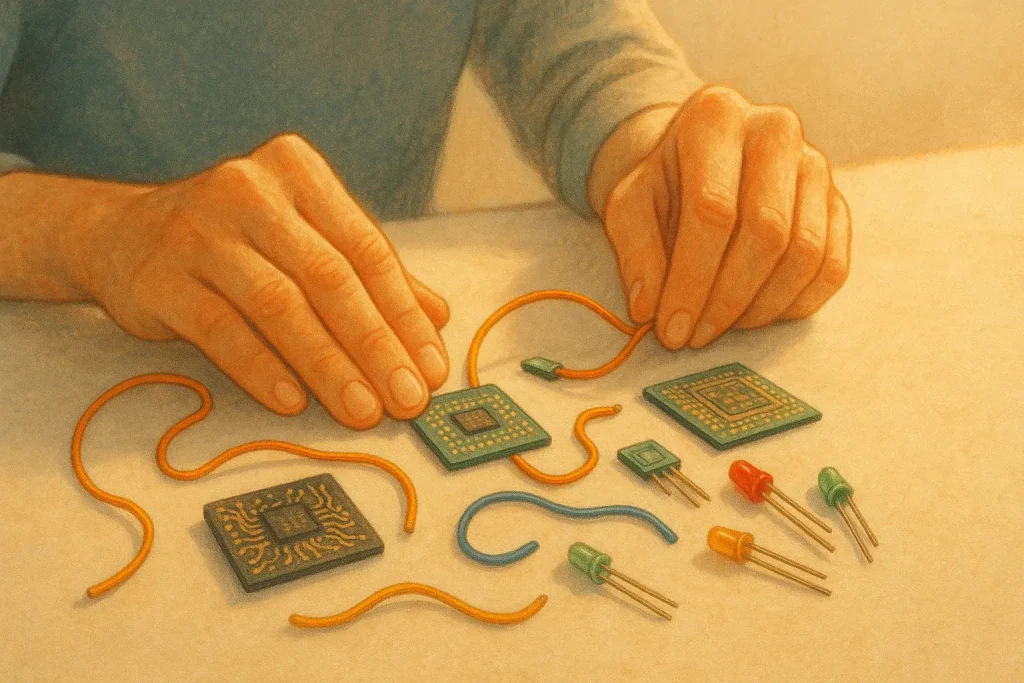Beyond the Wires: Why Circuit Boards Speak to Our Inner Journeys
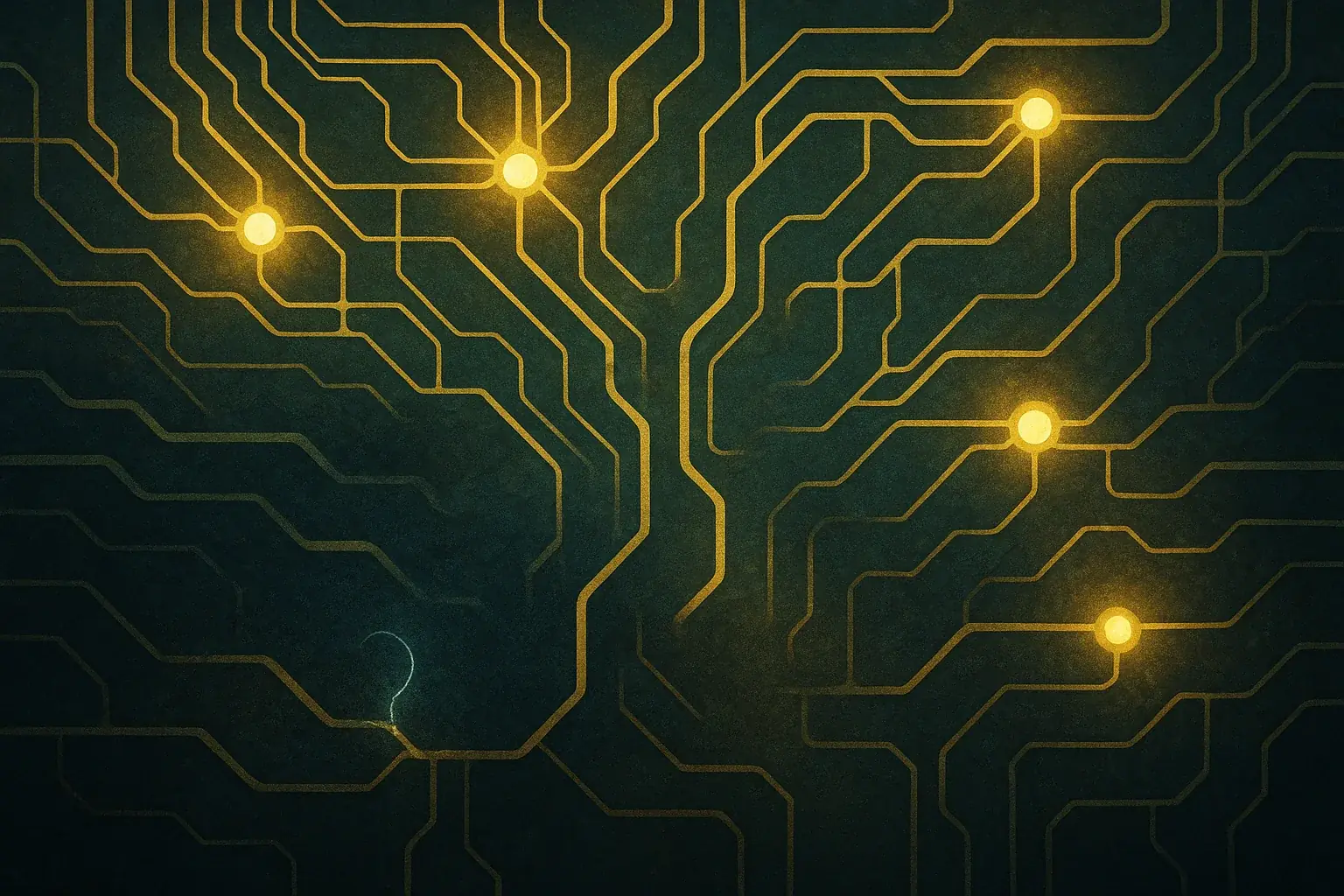
Circuit boards possess intricate visual complexity. They immediately suggest complex systems, pathways. Ever looked closely at an old circuit board? Did you feel a strange sense of familiarity, like gazing at a miniature city or a detailed map? Our research confirms many individuals experience this. These discarded tech fragments hold surprising, profound symbolic power for exploring our own inner lives.
Circuit boards often become potent metaphors for life maps. Their conductive pathways can represent personal journeys. The countless connections mirror our relationships, decisions. Even broken traces or missing components on a PCB can reflect past challenges or diversions. E-waste art therapy utilizes these visual cues. It transforms them into tools for deep self-reflection, a discovery many users report as transformative.
Here’s a significant finding from our UGC analysis. Many people discover that the very 'imperfections' or 'dead ends' on a circuit board become powerful symbols. These features help them process past challenges or unresolved issues in their own lives. It is an unspoken truth we often see. The 'brokenness' of discarded technology becomes a unique canvas for personal healing and narrative exploration.
EwasteTherapy.pro helps decode these layers of meaning. We guide you in using e-waste to interpret your own story. Our unique methodologies explore how these technological remnants can unlock personal insights. This process supports your journey toward transformation and well-being. Old tech finds new purpose here.
Pathways & Journeys: Decoding the Routes on Your Inner Circuit Board
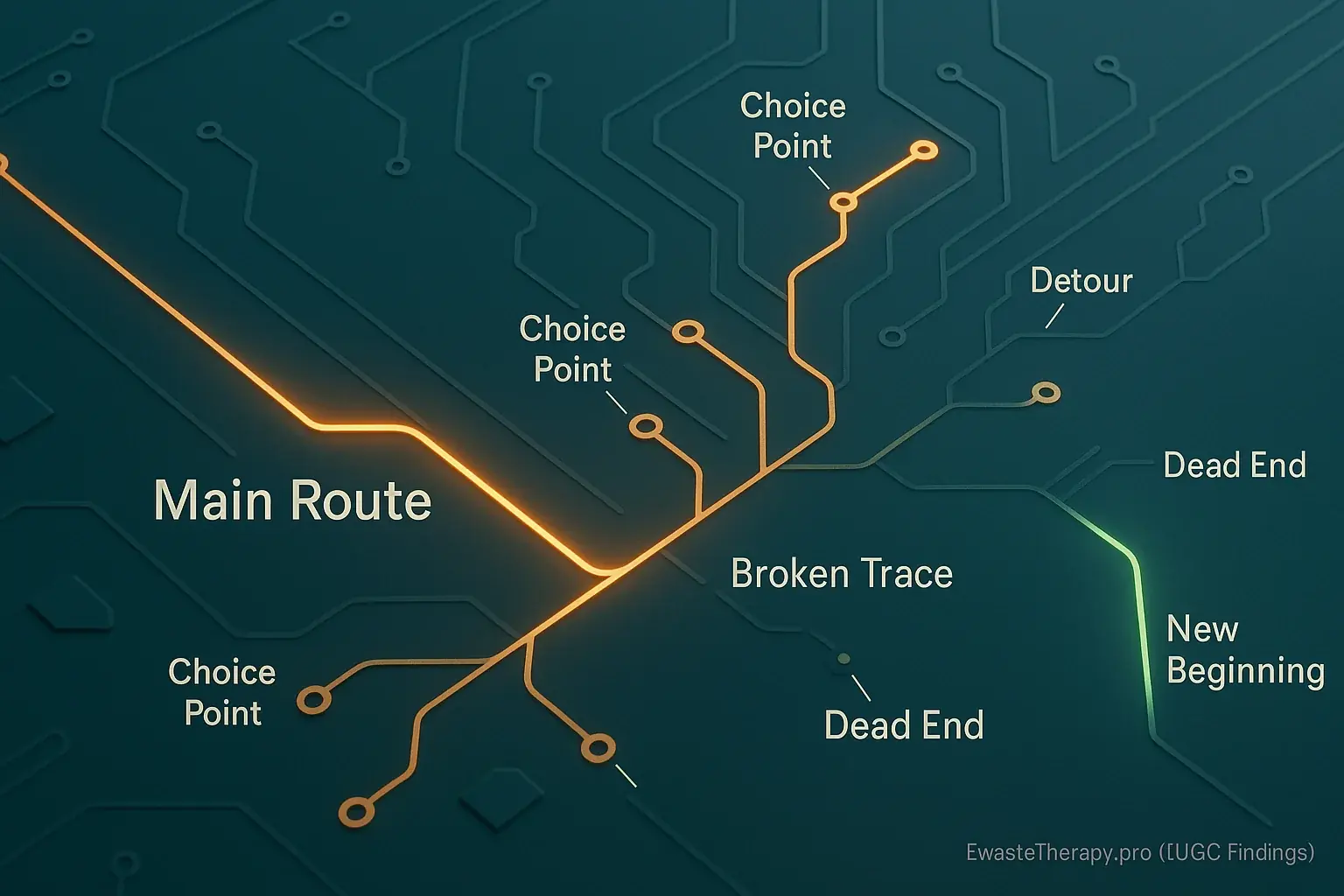
Circuit board traces offer a powerful visual. They mirror life's intricate journeys. Think of those tiny copper lines: each one a decision, a relationship, a path taken or not. Our analysis of participant reflections shows many see their own choices, careers, or personal growth as these interconnected routes. Some paths appear clear. Others wind unexpectedly, revealing new directions.
Broken traces tell stories too. It's a common user insight: a broken trace on a PCB can powerfully represent a lost opportunity or a relationship that ended abruptly. These visual breaks often symbolize moments of stagnation. A sudden stop. Many individuals engaging with these materials share how such elements help them acknowledge and process feelings linked to unexpected shifts or perceived failures in their life journey.
PCBs also illustrate energy flow. Or its absence. Many find that physically tracing a path on a circuit board can be a meditative exercise, helping them visualize their own progress or identify where they feel stuck. This tactile engagement highlights blockages. Where does your personal energy flow freely? Where do obstacles seem to divert your path? Our methods encourage this deep, material-based reflection.
Discarded tech holds profound potential for change. The idea of 'rewiring' resonates deeply within the e-waste art therapy process. Even a seemingly defunct board suggests that new connections can be made, new routes forged in life. This perspective offers hope. New beginnings are possible, crafted from the remnants of the old.
Interconnections & Relationships: The Web of Life on a Circuit Board
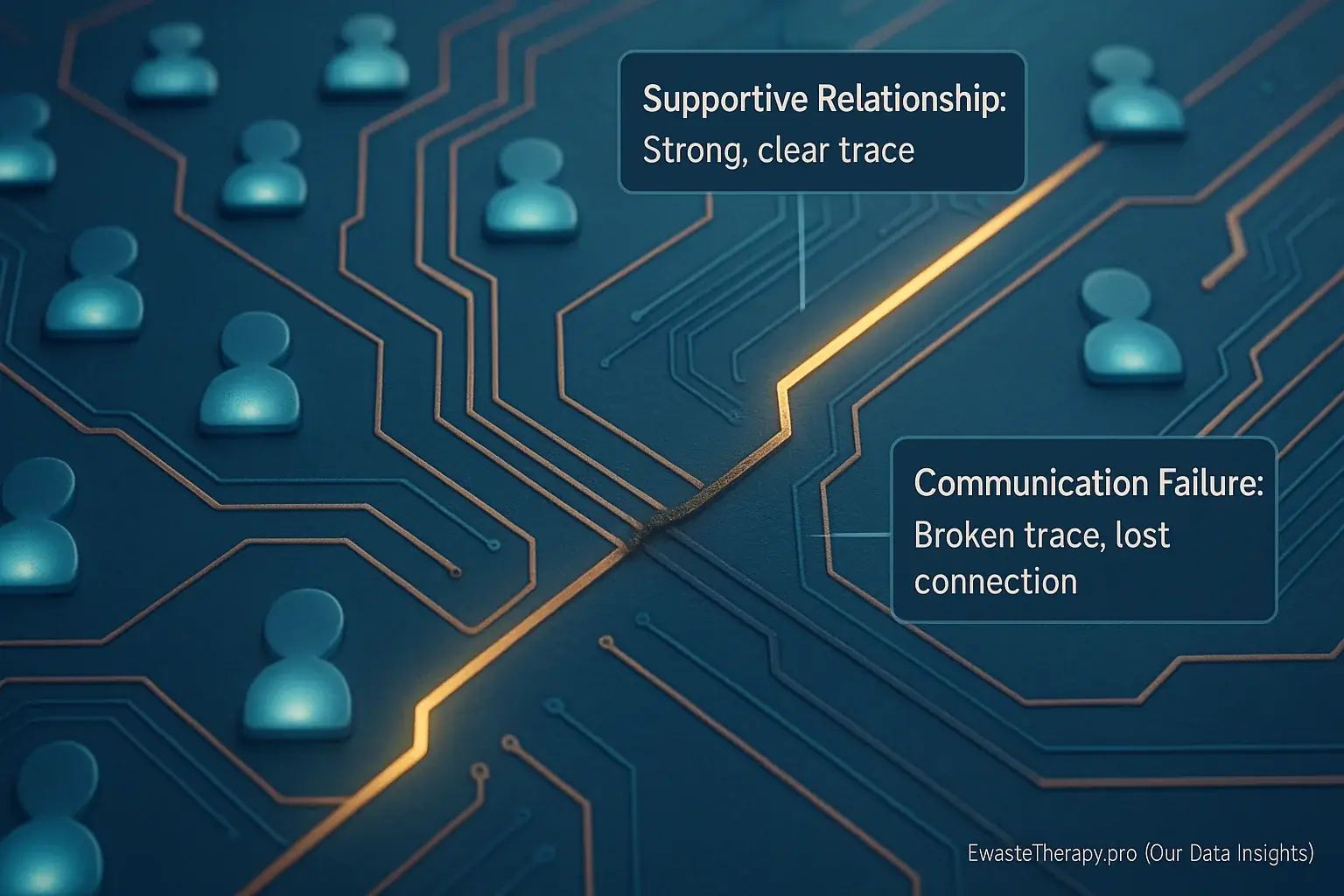
Circuit boards fundamentally represent connection. Our analysis shows users grasp this concept quickly. Each component depends on others. This mirrors how people connect in families or communities. Think of those tiny solder points. Each one signifies a bond. A relationship. This powerful parallel often sparks profound personal insights during the creative process.
The symbolism of connection integrity resonates deeply. Users frequently explore this theme in their e-waste art. A strong, clear trace on a PCB can vividly represent a supportive, healthy relationship. Many find this visual metaphor incredibly affirming. Conversely, our user data highlights how a corroded trace might symbolize interpersonal strain. A completely broken one? That often reflects a lost connection or a significant communication failure. One creator, observing a damaged board, recognized her own fractured family dynamic; the insight was immediate, fostering a new understanding.
Consider the 'energy exchange' or 'information flow' between components. This directly parallels human communication and mutual support. Information flows. Or it gets blocked. Our unique therapeutic prompts often guide individuals to explore these circuit-like dynamics in their own lives. Understanding a PCB's operational flow helps analyze complex relationship patterns. When one critical component fails, the entire system can falter. This is exactly like human bonds and support networks. This perspective, our users report, can clearly pinpoint where communication breaks down or where support is lacking.
The potential for repair offers tangible hope. Our findings consistently show this. Users often equate the act of fixing a circuit board to the challenging work of mending relationships. It becomes about consciously 'rewiring' old patterns. Or perhaps 'resoldering' broken trust with new understanding. This active process of physical repair, translated metaphorically, is therapeutically rich. It transforms passive observation into an empowered journey of active healing. Can you visualize the paths to reconnection in your own life's "circuits"?
Complexity & Systems: Navigating Your Inner Operating System with E-Waste Art
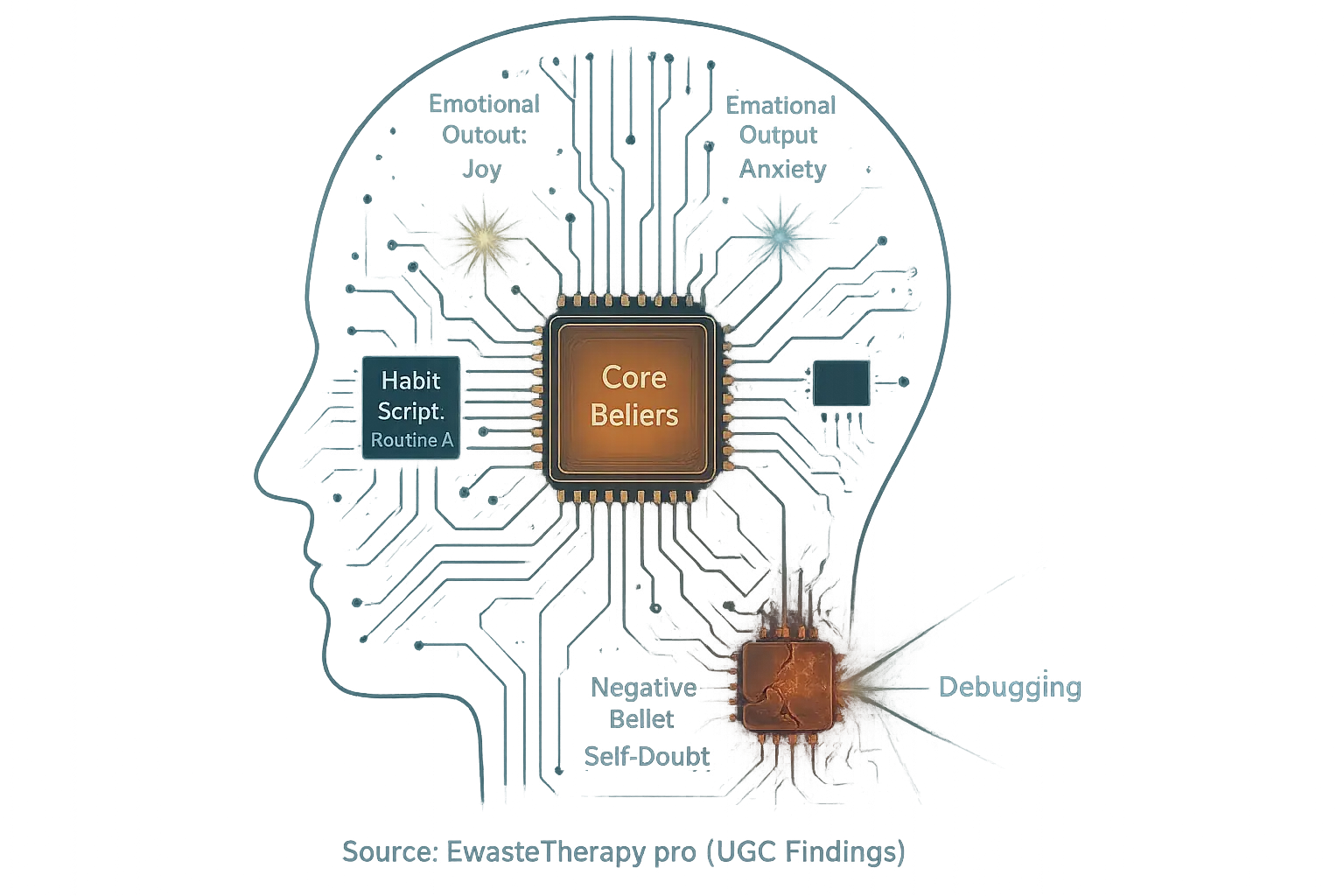
A circuit board reveals stunning complexity. Does your mind feel like that sometimes? A tangled web. EwasteTherapy.pro's analysis of user experiences shows this visual powerfully mirrors their own intricate thoughts. The board's pathways reflect daily routines. They echo complex job structures. Even family systems find a surprising parallel here. The connection is often immediate.
Your mind possesses its own 'operating system'. Core beliefs function like its base code. Habits run as automated scripts. Emotional reactions can be seen as system outputs. Many users report that identifying their 'default settings' or 'looping programs' becomes far clearer when visualizing their inner workings as a circuit board. Imagine someone finally seeing their chronic self-doubt not as a personality flaw, but as a faulty 'subroutine' inherited long ago – that’s the clarity users describe.
Can you truly 'debug' these mental programs? Our findings say yes. Engaging with e-waste art therapeutically provides a unique path. A single faulty capacitor can disrupt an entire electronic device. Similarly, users frequently discover how one unexamined, negative belief can derail their emotional well-being or progress. The art-making process allows a tangible, visual 'debugging' of these internal 'glitches'. This shift in perspective is consistently reported as profound.
This understanding fosters genuine empowerment. Grasping a circuit diagram demystifies complex technology. Likewise, mapping your inner 'circuitry' through e-waste art offers a new level of command over your responses and growth. Users repeatedly emphasize this newfound agency. It's about reclaiming your internal controls. Plain truth.
Breakdowns & Repair: Finding Wholeness in the 'Broken' Circuit Board
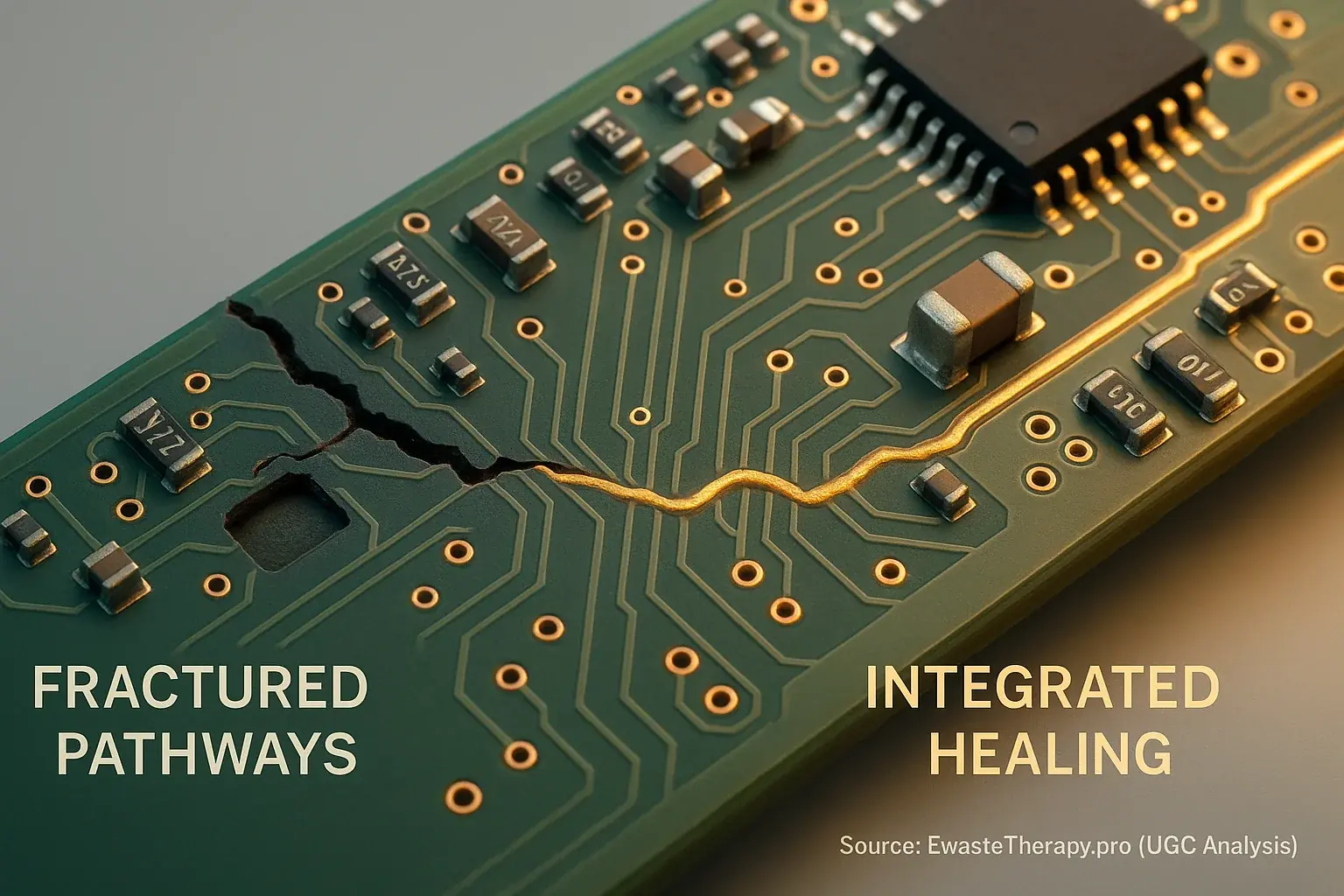
Device failure feels surprisingly personal. Your trusted tablet suddenly goes dark. That abrupt stop. Many people share how this mirrors their own system 'crashes', those difficult personal crisis moments. It is more than just broken tech.
Broken circuit boards display their damage openly. Scratched pathways. Missing tiny components. These visible flaws can powerfully symbolize personal trauma or deep emotional wounds. User feedback consistently highlights how physically interacting with a damaged board helps externalize feelings of being broken. Imagine tracing a cracked line on a PCB. For some, this simple act becomes a way to acknowledge their own fractured past, a quiet step toward healing.
The process of 'repairing' these boards holds profound therapeutic value. Soldering a new connection. Creatively patching a broken trace. These hands-on actions directly parallel personal healing. Many individuals engaging in e-waste art therapy report that mending a circuit board becomes a tangible ritual. It fosters resilience. This helps integrate fragmented parts of the self. It builds a sense of wholeness.
A repaired circuit board often carries visible marks of its past. The mend becomes part of its new story. This transformation isn't about erasing old damage. It's about integration. The board functions anew, stronger and uniquely whole. Our own healing journeys can reflect this very process, integrating experiences to build a more resilient self.
Hidden Layers & Unseen Processes: Unveiling Your Inner Truths with E-Waste Art
Your Inner Circuit: A PCB Life Path Reflection Tool
Reflect on Your Life Path
Select an aspect of your journey below to receive a unique, circuit board-inspired reflection prompt and practical insights.
Your pathways become clearer. This unique EwasteTherapy.pro guide maps life's connections using potent PCB symbolism. Understanding these resonant patterns deeply accelerates your healing.
Your Circuit, Your Story: Embracing the Transformative Power of E-Waste Art
EwasteTherapy.pro's research confirms a profound truth. Circuit boards are not mere electronic refuse. They mirror life's intricate paths. These components symbolize connections. They reflect inner complexities. Engaging with these materials in art therapy opens unique perspectives. This process fosters genuine self-discovery. It aids emotional healing. So, what's the real takeaway? Your old circuit board isn't just trash; it's a blueprint for your personal journey, waiting to be explored.
EwasteTherapy.pro's therapeutic frameworks highlight this transformation. The act of repurposing discarded technology powerfully mirrors personal healing journeys. You can find profound meaning in these objects. You can discover pathways to renewal. Discarded tech finds new purpose. You can too. This journey with e-waste isn't just about art; it’s about finding new ways to understand, repair, and even celebrate the intricate 'circuitry' of your own life. Ready to start building your own healing art?
